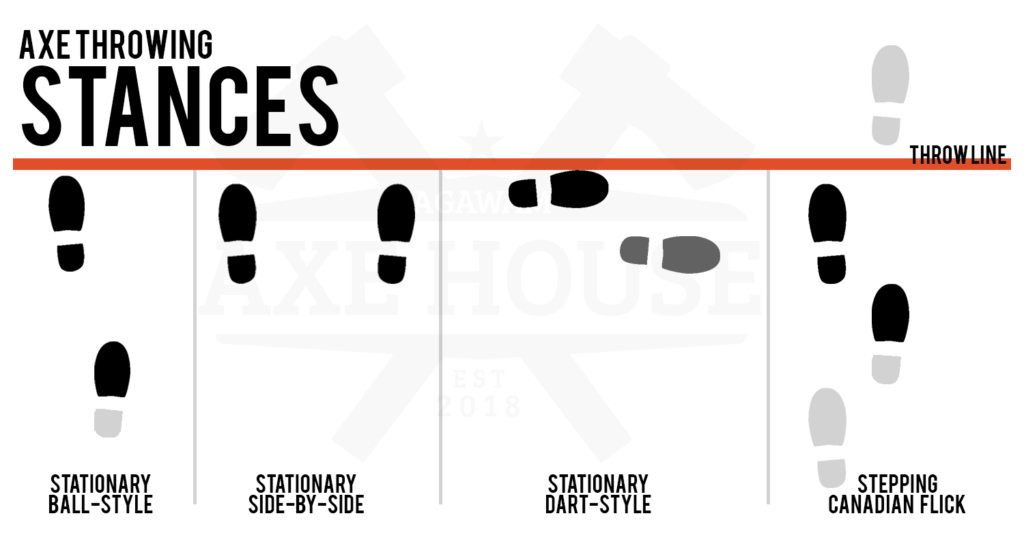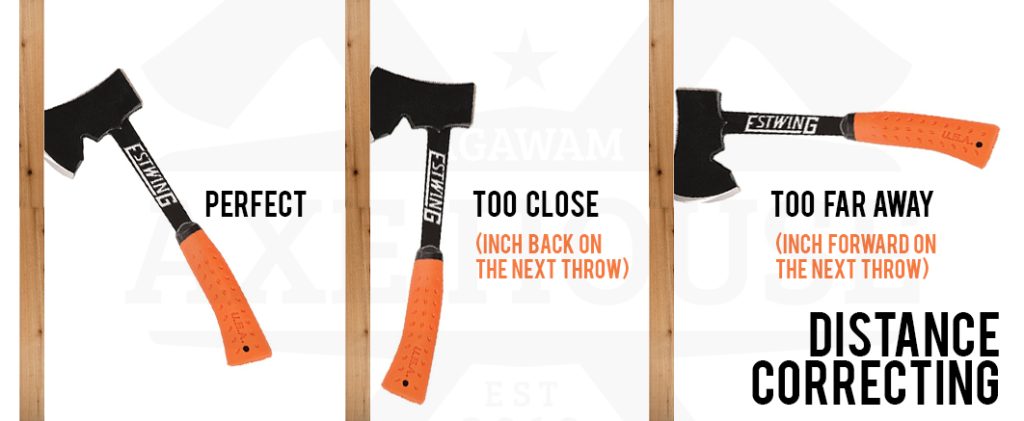There are 4 Basic things to master to improve your skills as an axe thrower; let’s see if we can help
1. GRIP
2. STANCE
3. DISTANCE and
4. FOLLOW-THROUGH
1. GRIP
Depending on the style you’re throwing (one-handed, two-handed, Canadian flick); mastering your grip will bring you a consistent throw every single time. Below are 3 examples of grip, one-handed, two-handed, and the Canadian flick grip. While you might have some variation of the three, the point is to help perfect your grip, and keep it consistent for every throw.
2. STANCE
Your stance will depend on the style you’re mastering, but you want to keep it consistent. Adopt a stance that is both comfortable and easy to repeat for every throw. You can stand in one place, having one foot in front of the other or keeping both feet side-by-side. You can also step into your throw. Whichever works for you, but it has to be replicated on every throw. Keeping your stance
consistent goes a long way in mastering axe throwing.
3. DISTANCE
Without getting too technical, your axe should only make one single rotation. Depending on how you throw and where you’re standing when you let that axe fly determines whether you have enough distance or not. Most professional axe throwing venues have some markings on the ground for League regulations and some include distance markers. When you’re sticking the axe perfectly in the target, you’ll want to make a note of where your foot is when you let go. This is your “spot” as we call it. It’s irrelevant which style, grip or stance you’re mastering, when it leaves your hand, sticks in the toe (see diagram on our Axe Throwing 101 post), you’re in the right spot!
4. FOLLOW-THROUGH
“to continue one’s movement after the axe has been thrown” – that’s the definition, and well, it’s pretty spot on. Whether you’re stepping into your throw or standing still continuing the movement
after the axe leaves your hand really helps with keeping that axe in the board. A tip that we usually give to help with follow-through on a ball/dart style throw is imagine you are reaching for something in your back pocket or reaching around to your lower back. More often than not, this helps give a good visual on how follow-through should feel/look. For a stepping throw, it’s typically followed through by continuing to step. While this can take longer to master, it does make for a smoother, most consistent throw; and
5. DODGE
.. just kidding



